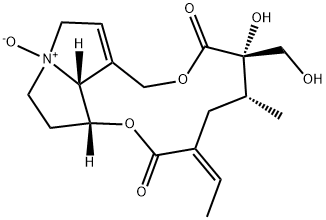Trimethylamine <i>N</i>-Oxide Anhydrous , >95.0%(T) , 1184-78-7
Synonym(s):
TMANO
CAS NO.:1184-78-7
Empirical Formula: C3H9NO
Molecular Weight: 75.11
MDL number: MFCD00082441
EINECS: 214-675-6
| Pack Size | Price | Stock | Quantity |
| 250mg | RMB135.20 | In Stock |
|
| 1G | RMB367.20 | In Stock |
|
| others | Enquire |
PRODUCT Properties
| Melting point: | 220-222 °C (lit.) |
| Boiling point: | 133.8°C (rough estimate) |
| Density | 0.9301 (rough estimate) |
| vapor pressure | 23.5Pa at 20℃ |
| refractive index | 1.4698 (estimate) |
| FEMA | 4245 | TRIMETHYLAMINE OXIDE |
| storage temp. | Hygroscopic, Room Temperature, under inert atmosphere |
| solubility | Chloroform, DMSO, Methanol (Slightly) |
| pka | 4.65(at 25℃) |
| form | Solid |
| color | Pale Yellow |
| Odor | odorless |
| Water Solubility | 793g/L at 24.5℃ |
| Merck | 14,9711 |
| JECFA Number | 1614 |
| Stability: | Hygroscopic |
| LogP | -2.79 |
| EPA Substance Registry System | Methanamine, N,N-dimethyl-, N-oxide (1184-78-7) |
Description and Uses
Trimethylamine N-oxide (TMAO) is a metabolite of choline, phosphatidylcholine, and L-carnitine . It is formed by gut microbiota-mediated metabolism of choline, phosphatidylcholine, and L-carnitine to TMA followed by oxidation of TMA by flavin-containing monooxygenase 3 (FMO3) in the liver. Dietary administration of TMAO (0.12% w/w) increases renal tubulointerstitial fibrosis, collagen deposition, and Smad3 phosphorylation in mice and increases aortic lesion area in atherosclerosis-prone ApoE-/- mice. Plasma levels of TMAO are elevated in patients with chronic kidney disease and decreased in patients with active, compared with inactive, ulcerative colitis. Elevated plasma levels of TMAO are associated with increased risk of cardiovascular disease.
Trimethylamine?N-oxide can be used:
- As a demetallation?and decarbonylation?reagent for organometallic compounds.
- To prepare azomethine ylide by reaction with lithium di-isopropylamide. This, in turn, may be reacted with simple alkenes to obtain corresponding pyrrolidines.
- To mediate the conversion of thiols to disulfides.






